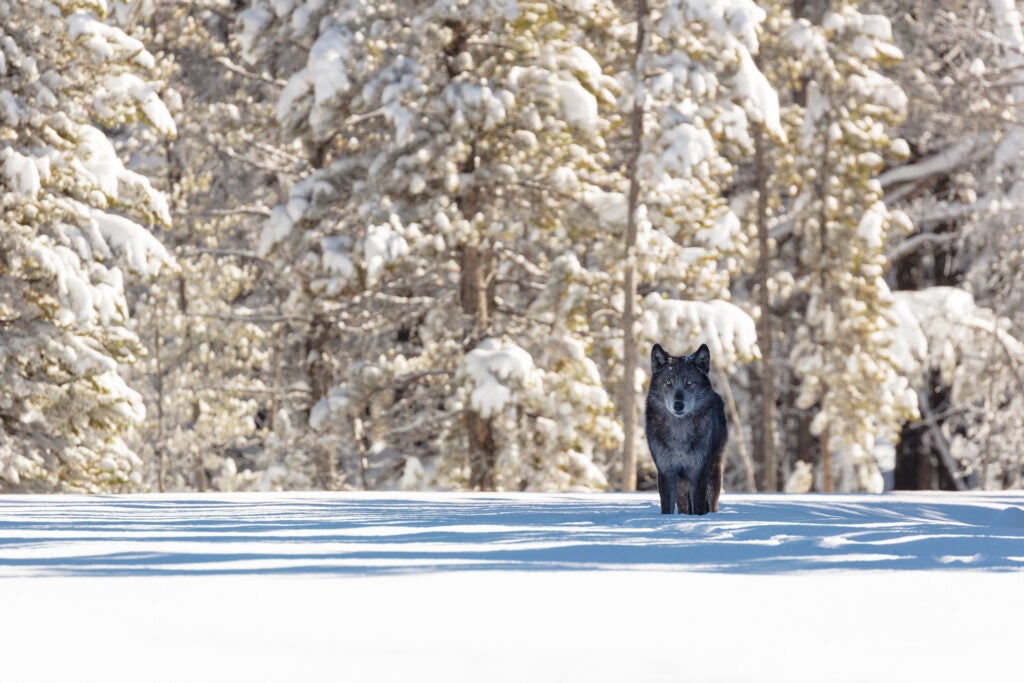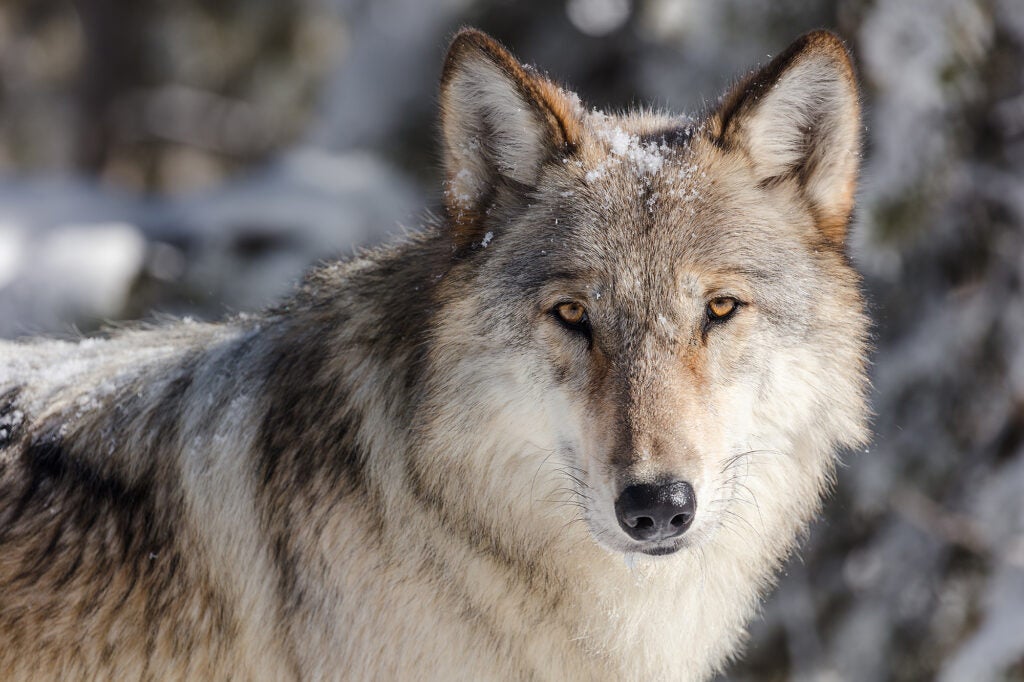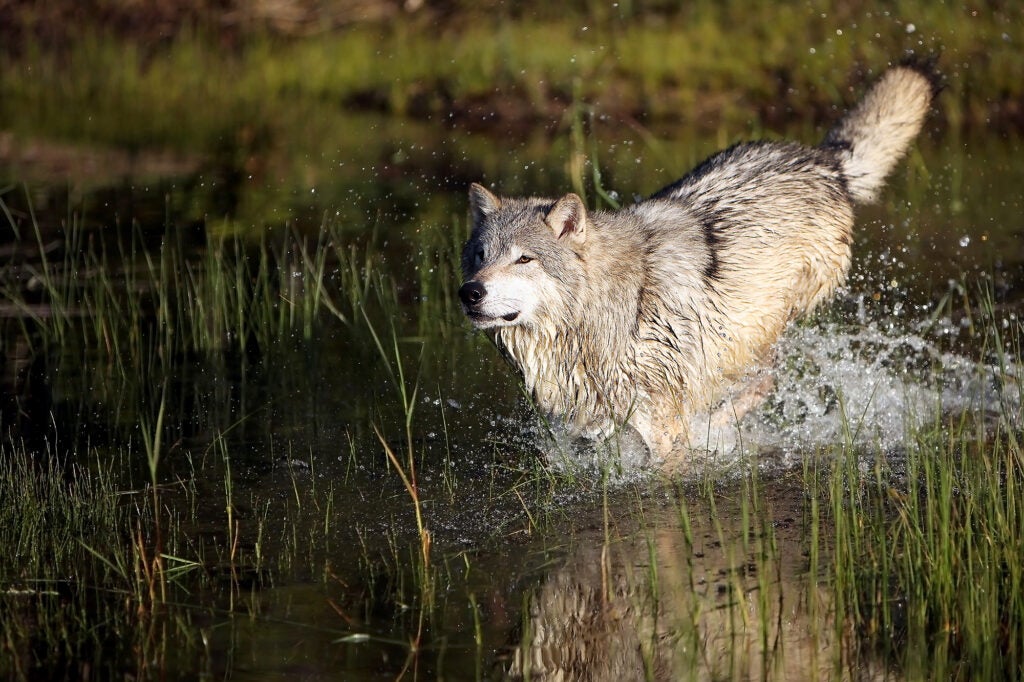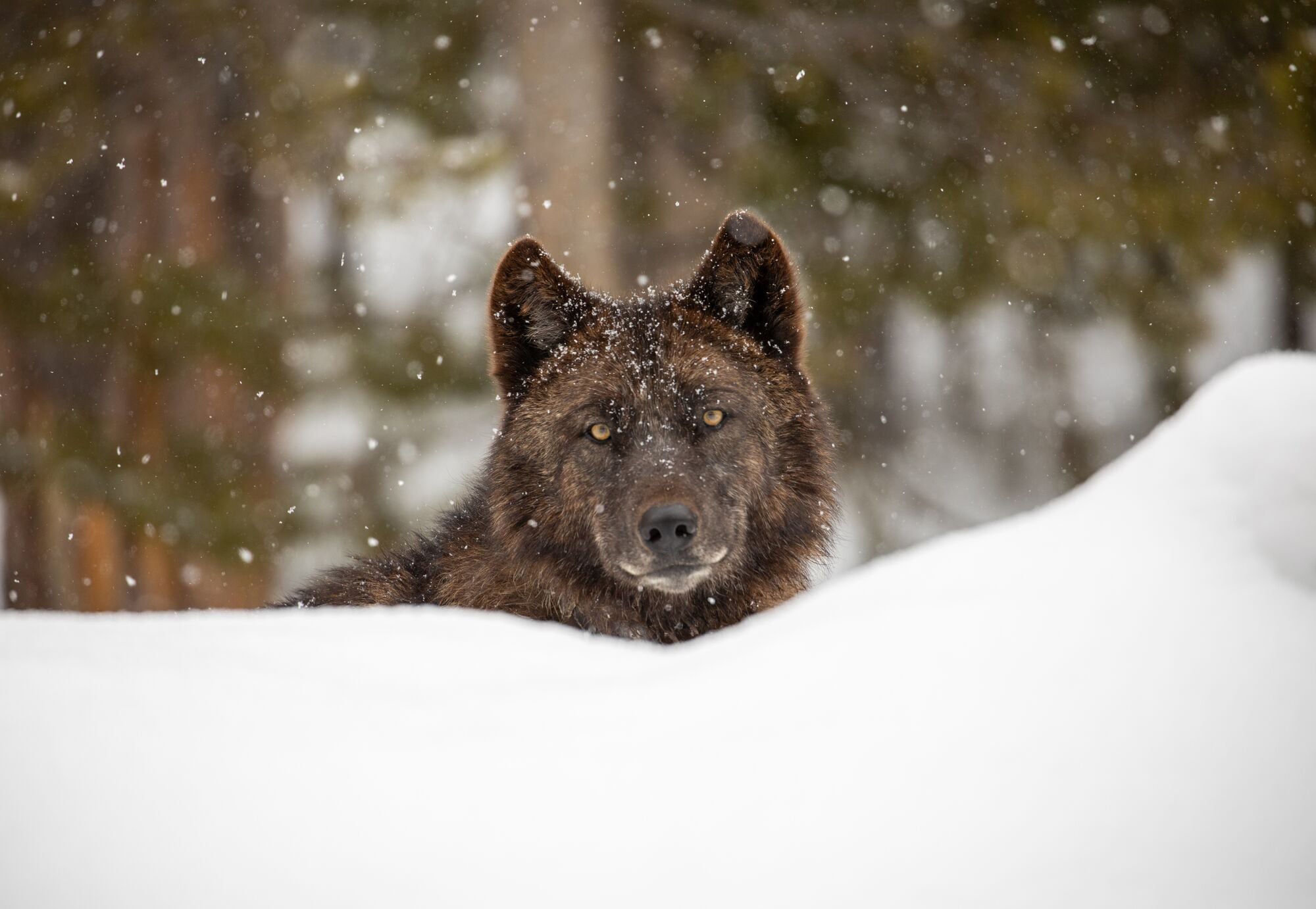A New Vision for Wolf Conservation After 150 Years of Yellowstone
Emergency protections are needed for the gray wolf after the Northern Rockies sees the worst persecution of wolves in a century.

A living symbol of wilderness, the wolf is one of North America’s most iconic native predators. (Jacob W. Frank / NPS)
The National Park Service is celebrating the 150th anniversary of Yellowstone this year. Looming in the background of this celebration is the killing of a record number of Yellowstone wolves. Just this season, 25 Yellowstone wolves were killed after they ventured outside of the national park boundary into Montana, Idaho, and Wyoming. While wolves in 44 states were recently relisted thanks to a lawsuit from Earthjustice and its partners, federal protections for wolves in the Northern Rockies (Idaho, Montana, Wyoming, eastern Washington, eastern Oregon, and north-central Utah) have been stripped over the past decade through a combination of administrative and legislative actions. Wolves in this region remain unprotected.
In Montana alone, more than 270 wolves have been killed statewide since the hunting and trapping seasons opened in the fall. In Idaho, data show that over 300 wolves have been killed statewide this season. It is time to reinstate federal Endangered Species Act protections for the Northern Rockies’ gray wolves who have suffered too long under hostile state management.
Wolves are being hunted and trapped throughout the Northern Rockies at rates reminiscent of a century ago. This persecution is exacerbated by aggressive wolf-killing legislation passed last year in both Montana and Idaho. These states’ new wolf-trapping and snaring laws aggressively expand how, when, and where wolves can be trapped, snared, and killed regardless of consequences to wolves and other species. In Idaho, the new wolf-trapping laws establish a permanent wolf-trapping season on private property across the state, eliminate limits on the number of wolves one person can kill, permit the continued use of bait that attracts non-target animals at high rates, and financially sponsor private-contractor killing of wolves. Montana recently introduced wolf snaring, which a trapping method that maims and kills indiscriminately, and lengthened its trapping and snaring season.
Yellowstone’s Phantom Lake pack — formed by wolves from the 8 Mile pack in the spring of 2019 and producing 13 pups that year — has been “eliminated” because so many of its members have been killed outside the park. By February, six members of Yellowstone’s Junction Butte Pack — formed in 2012 — had also been killed. One-fifth of Yellowstone’s wolves have been killed this season. With this killing of Yellowstone wolves and state policies that allow for the killing of 85% of Montana’s wolves and 90% of Idaho’s wolves, fifty years of recovery efforts for the species are quickly being eroded.
This erosion of gray wolf recovery efforts harms more than the species itself. As a keystone species, gray wolves play a crucial role in regulating ecosystem health. Studies conducted in Yellowstone National Park show that the reintroduction of wolves has cascading positive effects throughout the park’s ecosystems. Wolf prey carcasses create food sources for other species such as foxes, wolverine, coyotes, bald eagles, bears, and ravens. Native trees such as aspen and willow have regrown as elk populations and behavior respond to wolf predation, restoring songbird and beaver habitat. The current wolf hunts will upend this ecosystem recovery.

A wolf at Yellowstone National Park. (Jacob W. Frank / National Park Service)
Wolf killing has broad impacts on ecosystems and so does the way wolves are killed. Wolf trapping and snaring harm other wildlife through incidental capture, including of threatened and endangered species. According to Idaho Department of Fish and Game’s (IDFG) own data, 47% of animals that are caught in wolf traps are not wolves, and 57% of those animals die. We know these numbers are very likely an underestimate because they are based on self-reported data from trappers — which is not always required — and an assessment of the animal’s condition when it was released, which does not accurately reflect survival rates.
This past December, Earthjustice and its partners sued the state of Idaho because state-authorized wolf trapping and snaring captures, injures, and kills Endangered Species Act-protected grizzly bears and Canada lynx. Through our lawsuit, we intend to hold the state accountable for allowing the trapping and snaring of federally protected grizzly bears and lynx through its wolf-killing agenda. But the threat extends beyond these species as the indiscriminate nature of trapping and snaring devastates a multitude of wildlife by capturing and often killing whatever is caught in these traps and snares. Wolf-killing legislation has radiating ramifications, and our lawsuit only begins to address this harm.
In Montana, we sent a notice of intent to sue because the state’s wolf-trapping and snaring rules also threaten grizzly bears and Canada lynx. A few months later, the Montana Fish and Wildlife Commission voted to prohibit wolf snaring on public lands in Canada lynx protection zones and moved the default start of the wolf-trapping season in and near grizzly habitat from December 15 to December 31, reducing the likelihood that late-denning grizzlies would be incidentally captured. This was a small step in the right direction, but wildlife is still subject to incidental capture in wolf traps and wolves in Montana still face excessive mortality as evidenced by the 18 Yellowstone wolves killed in Montana in just the past few months. A total of 85 wolves were killed in the regions bordering the park in Montana.

A wolf running through a pond in Montana. (Megan Lorenz / Getty Images)
Idaho and Montana’s wolf-killing laws demonstrate a lack of respect for the many communities in the Northern Rockies that value the gray wolf. Tribal Nations have called on Secretary Haaland to emergency relist the gray wolf because the federal government “further erode[d] tribal sovereignty by not consulting with Indian Country” and ignores “Native voices — by failing to give any thought to [Native] interests, sacred ceremonies, and cultures.” In response, Secretary Haaland wrote an op-ed stating that state laws like those passed last year in Idaho and Montana are jeopardizing the species and all the progress made in recovering the gray wolf. Yet, the Fish and Wildlife Service has failed to emergency relist the gray wolf in the region.
Montana businesses have also suffered from this hostility toward wolves. More than 100 local Montana businesses have called for an end to the wolf-killing near Yellowstone National Park, which negatively affects their livelihoods. According to Wild Livelihoods Business Coalition, “the top-ranked reason that visitors come to the northern gateways of Yellowstone is to see wildlife in the Northern Range of Yellowstone. These visitors indicate that they are here primarily to see wolves and they have spent approximately $80 million in the first 10 months of 2021.” Despite these economic benefits for communities throughout the Northern Rockies region, local state governments remain unwilling to stop the continued wolf killing.
The Department of the Interior is celebrating 150 years of Yellowstone by “reflect[ing] on the lessons of the past while focusing our efforts to strengthen Yellowstone and our many partnerships for the future.” With Yellowstone wolves — and the gray wolf species as a whole — once again being pushed to the precipice by poor state policies divorced from science, a slow response from the Biden administration, a failure to meaningfully involve Indigenous communities, and expanded wolf-trapping laws that devastate other species and local economies, our elected officials seem keen on ignoring the lessons of the past.
150 years after Yellowstone’s establishment, we need a better vision for wolf conservation than what Idaho, Wyoming, and Montana have offered. We need a vision of science-based protections that partners with wolf-connected communities, includes meaningful consultation with Tribes, and supports local businesses and economies reliant on a thriving wolf population. For far too long, we have managed wolf populations under outdated and insufficient recovery standards. It is time to replace obsolete thinking about the bare minimum number of wolves for species survival with a positive vision of wolves’ natural role in our ecosystem. The federal government must reinstate protections for wolves immediately and maintain those protections unless the states demonstrate their competence to manage the species based on science. After 150 years of Yellowstone, we demand more for wolves and the many communities that depend on them.
Established in 1993, Earthjustice's Northern Rockies Office, located in Bozeman, Mont., protects the region's irreplaceable natural resources by safeguarding sensitive wildlife species and their habitats and challenging harmful coal and industrial gas developments.
